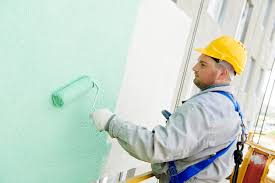Ink painting or “sumi” as it’s known in Japan is a beautiful and expressive art form dating back hundreds of years 酒精墨水畫. This ancient art form, which is rooted in Eastern tradition, is a testament of the beauty that can be found in simplicity and minimalism. Ink painting can be a rewarding and exciting experience for those who are new to it. This is a quick guide to the basics of ink-painting for beginners.

Understanding the Basics
Black ink is usually used for ink painting, but colored inks are also acceptable. It is more important to capture the spirit or essence of the subject than its appearance. This art form emphasizes spontaneity and fluidity. It often portrays subjects from nature such as animals, landscapes, plum flowers, bamboo and other plants.
Essential Tools
You’ll need the following tools to begin your journey of ink painting:
1. The ink is traditionally made by grinding an Ink Stick on an Ink Stone with water. This produces varying shades black.
2. **Brushes** Ink painting calls for special brushes, made of various materials including animal hair. These brushes are flexible and allow for both large and fine strokes.
3. Paper: Rice paper or “xuan paper” is the best paper to use for ink paintings. It allows for a smooth flow of ink and creates a beautiful absorption.
4. Water droppers and brush rests are useful tools to keep your workspace neat. They also help you control the amount of ink mixed with water.
Basic Techniques and Practices
1. *Holding the Brush**: Sumi-e artists, unlike Western painters, hold the brush vertically. This grip gives you greater control of stroke weight and direction.
2. **Control and fluidity**: In ink painting, one of the most important lessons is to learn to control the brush so that you can create thick and thin strokes and dark and light shades – often within the same stroke. It is about finding the right balance between the intentional strokes you make and the natural flow.
3. Beginners often start by practicing simple subjects such as leaves or flowers. This will help you to build muscle memory and understand how the ink and brush work together.
4. Ink painting is all about spontaneity, and imperfections are beautiful. Each stroke is unique, and it cannot be reversed. This teaches the practitioner to accept their mistakes and find beauty in the unexpected.
Mindfulness and philosophy
Ink painting can be a form of meditation as well as an art. Ink painting encourages mindfulness, since artists are required to focus on their brushwork and breathing. Every painting session is an opportunity to develop patience, discipline and an appreciation of simplicity.
Final Thoughts
Ink painting is a great way to learn. It can also be an enlightening and humble experience. Beginners should approach ink painting with an open-minded attitude and be willing to experiment and learn. Each brushstroke brings a new understanding to this timeless art. Ink painting is a way to connect with yourself and art. Gather your tools and find a quiet place to let the ink lead you on this beautiful journey.